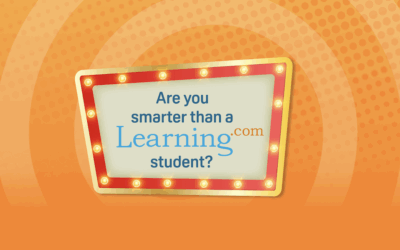The world is becoming increasingly technology-based, which makes it more important than ever for students to master digital skills that will support them now and in the future. Even pre-COVID-19, many schools had digitally based learning programs to support in-classroom efforts. During the pandemic, the use of these digital tools skyrocketed, with many classes performing learning in part or exclusively online.
In addition to educational purposes, digital skills have become essential for career readiness. Mastering essential digital skills now positions students for a wider range of opportunities in the future.
Most Important Digital Skills for Students
Introducing students to digital skills early helps to build a base upon which additional, more advanced digital skills can be learned. Below are some of the important skills for students to learn to increase digital literacy and position themselves for future technology skill-building.
1. Computer Fundamentals
One of the first sets of skills a student should master is basic computer fundamentals. This includes knowing how a computer works, how to identify and use hardware and software, and how to troubleshoot basic computer problems. With this, students will learn how to transfer or communicate data (such as downloading, uploading and saving), as well as how to effectively use most devices. Learn more about critical computer fundamental skills for students here.
2. Keyboarding
Keyboarding is also a critical digital skill for students. Keyboarding is used in educational and professional settings, as well as being a part of preferred communication methods such as email, text messaging, professional communications, educational papers and more.
A lack of keyboarding skills can hinder a student’s education as well as their ability to progress in a career. Failing to be able to type effectively can mean students are less likely to perform to their full potential on computer-based assignments – they may feel self-conscious about their typing or will have more difficulty putting their thoughts into words. See more about the importance of keyboarding skills for students here.
3. Computational Thinking
Another essential digital skill for students is computational thinking. Computational thinking is a problem-solving process that approaches a complex task by breaking it down into smaller parts, eliminates extraneous information, identifies patterns of information then creates a defined step-by-step (algorithmic) sequence to achieve a solution or goal. While you may not think of this as a traditional digital skill, it is actually an important part of a foundational building block for coding, formulas, and other algorithmic design. Learn more about computational thinking for students here.
4. Word Processing, Spreadsheets & Presentations
Students should also have the skills to effectively use word processing, spreadsheets and presentation software. These are some of the most common tools used in both education and professional settings. While the actual software programs may vary, introducing these skills to students provides a base knowledge that can make it easier for students to adopt and effectively utilize additional tools in the future.
5. Internet Use & Communications
Since the internet has become a prominent method for consuming and communicating information, it is also important for students to have the digital skills to be able to use the internet effectively, such as knowing how to perform sources and validate sources.
6. Digital Citizenship
Finally, students should also develop digital citizenship skills. This means being able to use technology responsibly and includes handling personal safety and privacy, avoiding cyberbullying or knowing how to respond when it is witnessed, avoiding plagiarism and copyright infringement and more.
Explore EasyTech
EasyTech is Learning.com’s flagship educational program, teaching critical digital skills in an effective, easy-to-use learning environment. Learn more about EasyTech by clicking the button below, or sample EasyTech with a free trial today.

Learning.com Team
Staff Writers
Founded in 1999, Learning.com provides educators with solutions to prepare their students with critical digital skills. Our web-based curriculum for grades K-12 engages students as they learn keyboarding, online safety, applied productivity tools, computational thinking, coding and more.
Further Reading
What is the Role of AI in Schools? Today and in the Future
For hundreds (or even thousands) of years, schools have been all about the student-teacher relationship. But with the AI era firmly upon us, that...
Are You Smarter than a Learning.com Student? The Results Are In.
Kids are growing up in a world where AI tutors guide their learning, social media algorithms shape their opinions, and misinformation often feels...
60% of Educators Use AI in the Classroom – Here’s Why
Ever since large language models (LLMs) like ChatGPT became widely available, there has been concern about the rise of students using them to do...




